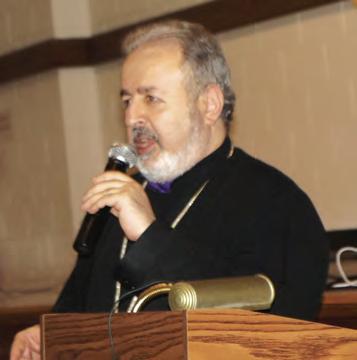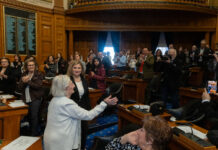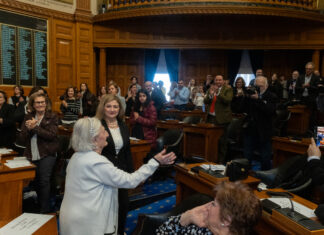By Aram Arkun
Mirror-Spectator Staff
NEW MILFORD, N.J. — Some 360 Armenians from the greater New York metropolitan area came together on May 14 at the Hovnanian Banquet Hall here to raise funds for the restoration of Saint Giragos Church in Dikranagerd (Diyarbakir), Turkey. This is the first church in the interior of Turkey to be restored by Armenians. Speakers came from Turkey, Los Angeles and other parts of the United States to support this unusual effort which will culminate this fall in the reopening of the church with the celebration of the Divine Liturgy in Armenian.
Archbishop Khajag Barsamian, Primate of the Diocese of the Armenian Church of America (Eastern), explained to those present that though most openly Armenian families have left the Dikranagerd area, “I, and I am sure many of you, believe that we must renovate our historical churches so that they remain standing and testify to the fact that Armenians lived and worked, and created Armenian establishments in those cities and regions, so that Armenian life continues.” He fervently then declared to great applause, “And why not…we believe that in the future Armenian Christians can still live on those historical lands, because those lands are Armenian lands.”
Vartkes Ergun Ayik was the main speaker. Chairman of the St. Giragos Church Parish Council, Ayik began the renovation project three years ago. He has visited the United States, Canada and Europe at his own expense to raise money for the church. Ayik explained that Saint Giragos, with its seven altars, was the largest Armenian Church in the Middle East. Although according to some sources it was built in the early 16th century, a stone bearing the date of 1367 was found among the ruins during the renovations. The church was renovated several times in the 19th century, and finally was built out of stone. It included a small chapel, guest house, school, kitchen and other structures around the church. It had a tall bell tower which was bombarded in 1915 and toppled by Ottoman cannon fire. The church was converted into a government warehouse sometime in the late 1950s, and Sümerbank used the property. It was only taken back in 1962 by the Patriarchate through the efforts of the local Dikranagerd-Armenian community. After 1980, however, practically no Armenians were left living in the city.
In 2007, after several visits Ayik noticed that the local situation had changed. New officials in Diyarbakir were willing to cooperate. The municipality promised to pay one-third of all restoration costs, and architects and specialists joined the efforts. Ayik said that they preferred not to ask for any financial support from Armenians in Turkey or abroad until construction began. Only a few Armenians believed in the success of this project, but by now 60 percent of the work has been completed. The construction cost of the buildings and bell tower together altogether is roughly $3 million. So far, the municipality has provided $660,000, and $675,000 has been collected from donations in Turkey. With undeniable evidence of the viability of the reconstruction in hand, Ayik felt the time had come to ask support from Armenians abroad.










